PREPPING OUTSIDE YOUR HOME:
Emergencies can happen anytime, so it's important to be ready—even when you're away from home. This guide gives you clear steps, highlights common mistakes, and offers top product picks to help you stay safe outdoors. Get started now!
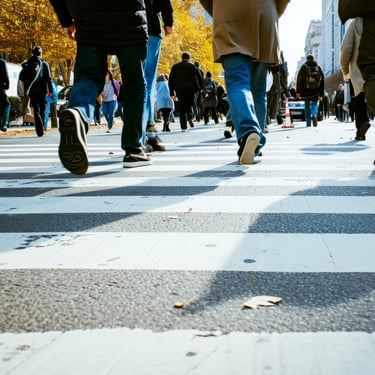
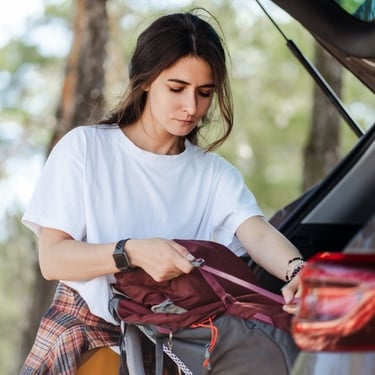


Why Prepping Outside Your Home Matters
Be Self-Sufficient: In an emergency, you can’t always rely on help being available.
Be Ready Anywhere: Whether you’re in your car or at work, having a plan keeps you prepared.
Stay Calm Under Pressure: Knowing you’re prepared helps you think clearly and act confidently.
Did You Know? The Red Cross says 60% of Americans aren’t prepared for emergencies when they’re away from home.
1. Everyday Carry (EDC)
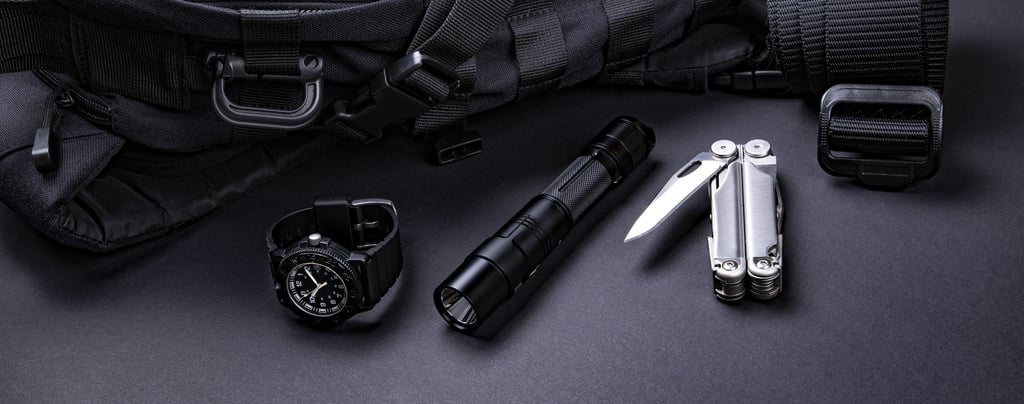

In a world full of surprises, having the right tools on hand can make life easier, safer, and more efficient. Everyday Carry (EDC) is a carefully chosen set of essential items that help you handle daily tasks, deal with emergencies, and stay prepared for anything. Whether you're commuting, traveling, or just going through your day, a reliable EDC setup keeps you ready for whatever comes your way.
Why EDC Matters
An EDC kit isn’t just about convenience—it’s about being prepared for real-life situations. Think about getting caught in a power outage, needing to open a package, or handling a minor injury. With a well-organized EDC setup, you’ll have the tools you need, without having to depend on anyone else.
A good EDC kit should be:
Practical – Items should serve a real purpose in your daily life.
Compact – Your gear should be easy to carry without weighing you down.
Reliable – Quality matters. Choose durable, long-lasting items.
Customizable – Your needs will be different from someone else's. Adjust accordingly.
Essential Everyday Carry (EDC) Items
✅1. Multi-Tool
A multi-tool is one of the most versatile EDC items. It combines various tools like pliers, a knife, screwdrivers, and scissors into one compact device. Perfect for quick fixes, cutting tasks, and emergencies.
Recommendation: Leatherman Skeletool Lightweight Multitool
✅2. Folding Knife
A small, high-quality folding knife is a must-have for EDC. It’s useful for cutting boxes, rope, and even food. Look for one with a secure locking mechanism for safety.
Key features to look for:
One-handed opening
Stainless steel blade
Pocket clip for easy carry
Recommendation: Gerber Paraframe Mini Knife
✅3. Flashlight
A reliable flashlight is crucial, whether you’re walking in a dark parking lot, experiencing a blackout, or searching for something under your car seat. A small, high-lumen flashlight can fit on a keychain or in your pocket.
Recommendation: OLIGHT IMINI 2 EDC Rechargeable Keychain Flashlight
✅4. Lighter
A lighter isn’t just for smokers. It’s useful for starting fires in emergencies, sealing frayed rope ends, or even lighting a candle during a power outage. Windproof lighters or waterproof matches are great choices.
Recommendation: Zippo All-In-One Lighter Kit
✅5. Portable Charger (Power Bank)
A dead phone can leave you stranded without communication or navigation. A compact power bank ensures you stay connected throughout the day.
Look for:
10,000mAh or higher for multiple charges
Fast-charging capability
Slim design for portability
Recommendation: Anker PowerCore 10000mAh Portable Charger
✅6. EDC Pocket Organizer
Keeping all your small EDC items organized prevents them from getting lost. A pocket organizer can hold your multi-tool, pen, flashlight, and other small essentials in one compact case.
Recommendation: Maxpedition E.D.C. Pocket Organizer
✅7. Wallet with RFID Protection
A good wallet should not only store cash and cards but also protect against electronic theft. RFID-blocking wallets prevent skimmers from stealing your credit card information.
Recommendation: Travelambo RFID Blocking Slim Wallet
✅8. Pen (Tactical or Regular)
A pen is a simple yet useful tool. Tactical pens can also function as glass breakers and self-defense tools, making them a solid addition to your EDC.
Recommendation: Fisher Space Pen Bullet
✅9. Keychain Tools
Small but mighty, keychain tools can include mini screwdrivers, pry bars, or even compact multi-tools. These add functionality without taking up space.
Recommendation: Nite Ize DoohicKey Key Tool
✅10. First Aid Essentials
A mini first-aid kit with band-aids, alcohol wipes, and pain relievers is always a smart addition. Compact kits fit easily in a pocket or bag.
Recommendation: MOLLE Medical First Aid Kit
✅11. Self-Defense Item
Check local laws before carrying any self-defense item. Depending on where you are, legal options may include pepper spray, a small tactical baton, or even a licensed firearm. Always make sure you’re following the rules.
Recommendation: SABRE Pepper Spray
✅12. Notebook
Carry a small notebook to write down ideas, reminders, important info, or directions – especially if your phone dies or you need to quickly share something.
Recommendation: Rite in the Rain Weatherproof Notebook
EDC Tips
Know Your Environment: Think about where you spend most of your time and the challenges you might face, so you can customize your EDC to fit your needs.
Choose Multi-Use Items: Pick gear that can handle multiple tasks to keep your setup useful without adding extra weight.
Keep It Up to Date: Regularly check and update your EDC to match seasonal changes, new needs, or the latest gear.
Focus on Quality and Weight: Go for durable, lightweight items that are both reliable and easy to carry.
Stay Organized: Use an EDC pouch or organizer to keep your essentials easy to find when you need them. The Molle Pouches Tactical EDC Bag and VIPERADE VE1 Pocket Organizer are great options.
Common Mistakes to Avoid
Carrying Too Much: Don’t overload your EDC. Extra items add weight and make it harder to stay organized. Stick to essentials that offer the most value.
Ignoring Legal Issues: Make sure your gear follows local laws to prevent any legal trouble.
Lack of Practice: Just owning tools isn’t enough—you need to know how to use them. Take time to practice and learn.
Skipping Maintenance: Regularly check and maintain your EDC items to make sure they’re always ready when you need them.
Real-World Uses
Urban Commuting: A multi-tool and flashlight can make a big difference during your daily commute. Whether you’re fixing a broken zipper, tightening a loose screw, or navigating a power outage, these tools help you handle unexpected challenges.
Outdoor Adventures: When hiking or camping, a reliable EDC kit is a must. Items like a sturdy knife, waterproof lighter, and first-aid kit help you build a fire, treat minor injuries, and tackle surprises with confidence.
Emergency Situations: Be prepared for sudden storms, natural disasters, or safety threats. An EDC with a whistle, power bank, and emergency blanket ensures you can call for help, keep your phone charged, and stay warm when it matters most.
Conclusion
Your EDC reflects your lifestyle and how prepared you are for daily challenges. By choosing practical, reliable gear, you’ll be ready to handle both routine tasks and unexpected situations with confidence. Invest in quality items, keep your setup organized, and regularly update it to match your changing needs. Stay prepared and stay ready.
2. Bug Out Bag (72 hrs)
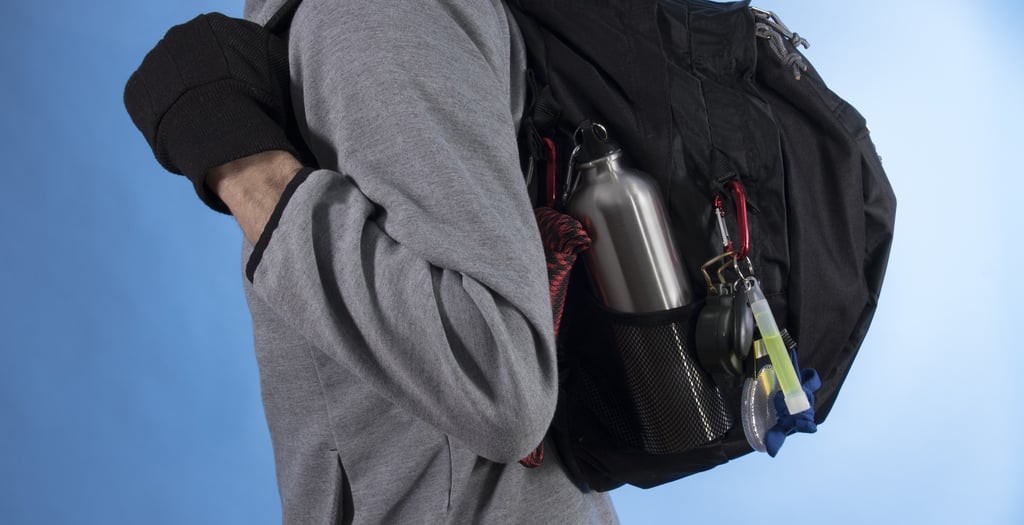

A well-prepared Bug Out Bag (BOB) can be the difference between chaos and survival during a crisis. Designed to sustain you for at least 72 hours when evacuation becomes necessary, your bug out bag is a portable lifeline stocked with essential supplies to help you navigate emergencies, natural disasters, or unexpected disruptions.
Why a Bug Out Bag Matters
When disaster strikes, seconds count. A Bug Out Bag isn’t just a collection of gear—it’s your insurance policy against the unforeseen. Whether you’re evacuating during a flood, a wildfire, or civil unrest, a carefully curated BOB ensures that you have the tools you need to stay safe and self-reliant until help arrives. Key principles for your bug-out bag include:
Practicality: Every item should serve a clear, vital purpose.
Lightweight & Compact: Supplies must be portable enough to grab and go at a moment’s notice.
Durability: Gear must withstand harsh conditions and frequent use.
Customization: Tailor your bag to your environment, personal needs, and potential emergency scenarios.
Essential Bug Out Bag Components
Building an effective bug out bag means selecting quality items that maximize survival potential while keeping weight and bulk to a minimum. Consider these critical components:
Water Supply & Purification
Include a minimum of one liter of water per person per day plus a reliable purification method.
Why: Clean water is essential for hydration and survival.
Tip: A compact water filter (e.g., Sawyer MINI or LifeStraw) paired with purification tablets offers dual protection.
Non-Perishable Food
Stock up on energy-dense, long-lasting food such as freeze-dried meals, energy bars, or MREs.
Why: In emergencies, access to fresh food may be limited.
Tip: Consider lightweight, calorie-rich options that require minimal preparation.
Shelter & Clothing
Pack a lightweight tarp, emergency bivvy, or compact tent, along with an emergency blanket or sleeping bag.
Why: Proper shelter and clothing protect you from the elements during evacuation or while waiting for rescue.
Tip: Choose gear that is adaptable to your local climate and weather conditions.
First Aid Kit
A comprehensive kit including bandages, antiseptics, pain relievers, and any personal medications.
Why: Immediate medical attention can prevent minor injuries from becoming serious.
Tip: A rugged, compact kit such as the Surviveware Small First Aid Kit is designed for on-the-go emergencies.
Multi-Tool & Knife
A versatile multi-tool combined with a durable fixed-blade knife.
Why: These tools handle a variety of tasks—from food preparation and repairs to building shelter.
Tip: Tools like the Leatherman Wingman or Gerber StrongArm provide reliability in critical moments.
Fire Starting Supplies
Waterproof matches, a sturdy lighter, or a fire steel.
Why: Fire is crucial for warmth, cooking, and signaling for help.
Tip: Equip your bag with options like the Exotac NanoStriker or UCO Stormproof Matches for versatility in all weather conditions.
Lighting & Communication
A high-lumen flashlight or headlamp, spare batteries, and an emergency radio.
Why: Adequate lighting and the ability to receive updates can guide you through darkness and uncertainty.
Tip: A tactical flashlight like the Fenix PD35 ensures you’re never left in the dark.
Navigation Tools
A reliable compass, detailed maps of your area, or a handheld GPS device.
Why: Knowing your location and the best routes to safety is critical during an evacuation.
Tip: Devices such as the Garmin eTrex 10 can offer peace of mind when electronic systems fail.
Essential Documents & Cash
Copies of IDs, insurance policies, medical records, and a small amount of cash.
Why: During chaos, having vital documents and funds on hand can facilitate a smoother transition.
Tip: Store these in a waterproof pouch to protect them from the elements.
Additional Essentials
Items like a paracord, a whistle, personal hygiene supplies, and extra batteries.
Why: These small, versatile items can significantly boost your chances of managing unforeseen challenges.
Tip: Consider including a compact power bank to keep essential devices operational.
Personal Safety & Self-Defense
Depending on local laws and personal comfort, a discreet self-defense tool such as pepper spray or a personal alarm.
Why: Enhancing your security during unpredictable situations can provide an extra layer of protection.
Tips for Assembling and Maintaining Your Bug Out Bag
Assess Your Environment: Tailor your bag to the risks you’re most likely to face in your area.
Prioritize Multi-Functionality: Choose items that serve more than one purpose to save space and reduce weight.
Regularly Update Supplies: Check expiration dates, replace used items, and adjust for seasonal changes.
Organize Smartly: Use compartments or pouches to keep your gear accessible and well-organized.
Practice Drills: Familiarize yourself with the contents of your bag so that you can grab it quickly in an emergency.
Common Mistakes to Avoid
Overloading Your Bag: Carry only the essentials to avoid unnecessary weight and ensure mobility.
Ignoring Weight & Balance: Prioritize lightweight, high-impact items that won’t slow you down.
Neglecting Maintenance: Regularly inspect your gear to confirm that everything is in working order.
Overlooking Legalities: Ensure that every item, from self-defense tools to knives, complies with local laws.
Real-World Applications
Urban Evacuations: In a city-wide emergency, such as riots, blackouts, or transportation shutdowns, a well-stocked Bug Out Bag (BOB) helps you stay mobile and prepared. With essentials like maps, a flashlight, and a portable water filter, you can navigate blocked roads, find alternative routes, and stay safe while evacuating quickly.
Natural Disasters: Whether facing floods, hurricanes, wildfires, or earthquakes, your Bug Out Bag ensures you have food, water, medical supplies, and emergency shelter until help arrives. Having the right gear means you can stay safe, hydrated, and protected, even if you’re cut off from assistance for days.
Rural Emergencies: If you’re in a remote area, hiking, camping, or living off the grid, a Bug Out Bag becomes a survival must-have. With tools like a fire starter, compass, first-aid kit, and emergency rations, you can handle injuries, find your way back, and stay self-sufficient in unpredictable situations.
Conclusion: Stay Ready, Stay Safe
A Bug Out Bag isn’t just a backpack—it’s your lifeline in an emergency. When disaster strikes, having the right gear means you can act fast, stay safe, and protect your loved ones.
Don’t wait for the unexpected to catch you off guard. Build your Bug Out Bag today, keep it updated, and be ready for anything life throws your way. Click the links to get the best survival gear now—because preparation starts today, not when it’s too late!
3. Car emergency Kit
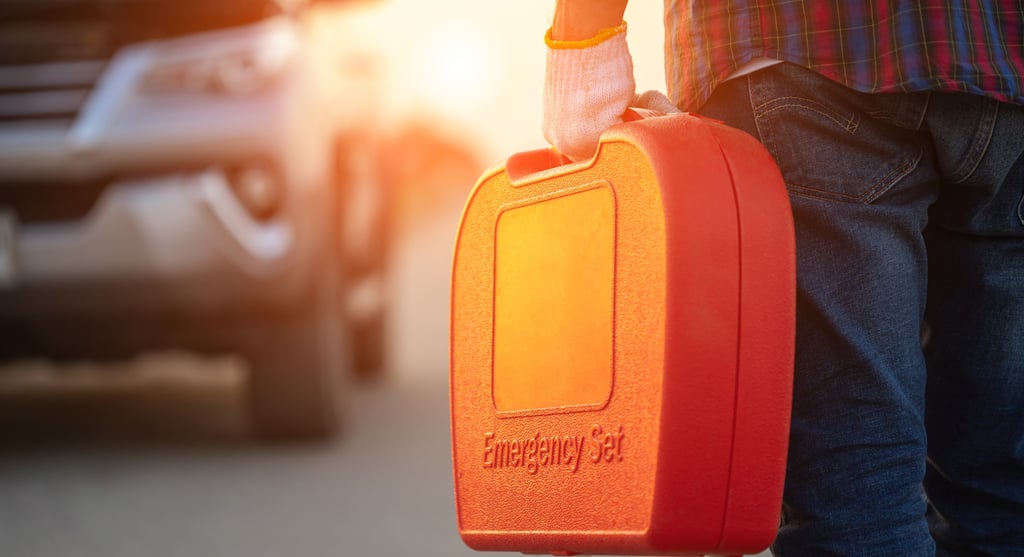

Picture this – you’re driving down a quiet road at night when your tire blows out, or your car won’t start in freezing weather. Roadside emergencies can happen to anyone, often at the worst possible times. Having the right tools and supplies in your car can mean the difference between a quick fix and hours stranded by the roadside. In this guide, we’ll walk you through the ultimate car emergency preparedness plan, packed with essential items that will keep you ready for anything.
In this guide, we’ll walk you through the ultimate car emergency preparedness plan, packed with essential items that will keep you ready for anything. Your preparation starts now – and everything you need is just a click away.
Why You Need a Car Emergency Kit:
Even with modern technology and roadside assistance, delays in service or lack of cell signal can leave you vulnerable. A car emergency kit gives you peace of mind by ensuring you can handle minor problems on your own until help arrives.
Core Components of a Car Emergency Kit
1. Emergency and Survival Gear
These items address immediate safety and survival needs:
First Aid Kit – Treat cuts, scrapes, and minor injuries quickly. Look for kits with bandages, antiseptic, and gloves.
Emergency Blanket (Mylar) – Retains body heat during cold weather or after accidents. Lightweight and easy to store.
Multi-Tool – Combines screwdrivers, pliers, knives, and more into one compact item for roadside repairs.
Flashlight and Batteries – Essential for nighttime emergencies. Crank or rechargeable models are best.
Reflective Triangles and Road Flares – Make your car visible at night or during poor weather to prevent accidents.
Fire Extinguisher – A compact fire extinguisher designed for car fires can save your vehicle from major damage.
2. Vehicle Breakdown Tools
These essentials can help you handle common car problems:
Jumper Cables (or Jump Starter) – A dead battery can stop you in your tracks. Portable jump starters offer more freedom.
Tire Repair and Inflator Kit – Temporarily fix flats and get back on the road until you reach a repair shop.
Portable Air Compressor – Keep your tires at the correct pressure, preventing blowouts and improving gas mileage.
Tow Strap or Rope – Useful for getting unstuck from snow or mud. Look for heavy-duty options rated for your car’s weight.
3. Food, Water, and Comfort
In long emergencies, staying hydrated and nourished is crucial:
Emergency Food Bars – High-calorie rations designed to last for years. Keep a few in your trunk.
Water Pouches – Pre-packaged, long-shelf-life water pouches are easy to store.
Compact Sleeping Bag or Blanket – Provides warmth during cold weather breakdowns.
4. Additional Essentials to Consider:
Phone Charger and Power Bank – A dead phone is the last thing you want in an emergency.
Ice Scraper and Snow Brush – Essential for winter emergencies.
Duct Tape – Fix minor issues temporarily until professional repairs are possible.
5. Organizing Your Emergency Gear:
Store your items in a durable, waterproof trunk organizer or backpack.
Rotate food, water, and medical supplies every 6-12 months to keep them fresh.
Car Trunk Organizer with Lid
6. Seasonal Adjustments for Your Car Kit:
Winter: Add extra gloves, hand warmers, cat litter (for traction), and windshield de-icer.
Summer: Carry extra water, sun protection, and hats.
Emergency Checklist for Your Car (Print and Keep in Glove Box):
✅ First Aid Kit
✅ Jumper Cables/Jump Starter
✅ Tire Inflator and Repair Kit
✅ Flashlight with Batteries
✅ Emergency Blanket
✅ Multi-Tool
✅ Reflective Triangles
✅ Fire Extinguisher
✅ Food and Water
✅ Power Bank/Charger
Emergencies are unpredictable, but preparation is simple. By equipping your vehicle with these essentials, you ensure the safety of yourself and your loved ones, no matter the situation. Start building your car emergency kit today by clicking the links above – because safety on the road starts with being ready.
4. Prepping at Work: How to Stay Ready for Any Emergency
Why You Should Be Prepared at Work
Emergencies can happen anywhere, including your workplace. Whether it's a power outage, natural disaster, workplace violence, or even just being stranded due to unexpected weather, being prepared can make all the difference. Since most people spend at least a third of their day at work, having the right emergency plan and gear on hand is essential.
1. Know Your Workplace Emergency Plan
Understand the company's emergency procedures.
Locate emergency exits, fire extinguishers, and first-aid kits.
Know your company’s communication plan during crises.
Identify the location of emergency meeting points.
Participate in workplace emergency drills to stay familiar with procedures.
2. Keep an Emergency Kit at Work
A small emergency kit can help you stay comfortable and safe in case of an emergency. Here’s what to include:
Food and Water: Shelf-stable snacks (protein bars, nuts) and bottled water (consider water purification tablets for longer emergencies).
First Aid Kit: Bandages, antiseptic wipes, pain relievers, allergy medication, personal prescriptions, and emergency trauma supplies.
Flashlight and Batteries: A compact LED flashlight or headlamp with extra batteries.
Multi-Tool: A good multi-tool can assist with small repairs and cutting needs.
Emergency Blanket: Lightweight and compact for warmth.
Personal Hygiene Items: Wet wipes, hand sanitizer, and travel-sized toiletries.
Power Bank: Keep a portable charger for your phone and other electronic devices.
Emergency Whistle: Useful for alerting others if trapped.
Dust Mask or N95 Mask: Helps protect against dust, smoke, and airborne hazards.
Small Cash Stash: In case ATMs or digital payments are down.
Gloves and Safety Glasses: Useful for handling debris or hazardous material.
Duct Tape and Plastic Sheeting: Can be used for shelter-in-place situations or sealing air leaks during a chemical emergency.
A Spare Set of Comfortable Shoes: In case you need to walk long distances.
Notebook and Pen: Useful for taking notes or communicating if phones fail.
3. Stay Aware and Alert
Pay attention to your surroundings and report anything suspicious.
Be aware of company policies on workplace safety and security.
Identify escape routes and alternative exits.
Keep your workspace organized to prevent tripping hazards during an evacuation.
4. Have a Personal Evacuation Plan
Identify multiple routes out of the building.
Arrange a meetup point with family or coworkers.
If you rely on public transportation, have an alternative way home.
Keep a city map in your emergency kit in case GPS is down.
Consider carpooling arrangements with coworkers in case of major transit shutdowns.
5. Prepare for Extended Stay Situations
If you ever get stuck at work due to extreme weather, transportation failures, or lockdown situations, having extra supplies can be a lifesaver.
Change of clothes (especially socks, warm layers, and a rain poncho).
Extra phone charger or solar charger.
Entertainment (book, puzzle, or playing cards to keep occupied).
Sleeping essentials (small pillow, inflatable mattress, or sleeping bag).
Reusable water bottle with built-in filter.
6. Security and Self-Defense Considerations
Depending on workplace policies, consider:
A discreet self-defense tool (keychain alarm, tactical pen).
Pepper spray (only if allowed).
A small personal alarm for drawing attention in an emergency.
A doorstop alarm to help secure a room if needed.
7. Digital Preparedness
Keep digital copies of important documents stored securely in a cloud drive.
Have emergency contact numbers saved in your phone and written down on paper.
Use encrypted messaging apps for secure communication.
Subscribe to workplace or local emergency alert systems.
Back up important work files and store them on a USB drive or cloud storage.
8. Mental Preparedness and Training
Take a basic first aid or CPR course to be prepared for medical emergencies.
Learn basic survival skills like signaling for help and emergency navigation.
Practice workplace emergency drills regularly.
Stay calm in crises and have a mental plan for different emergency scenarios.
Do you have an emergency kit at work? If not, now is the perfect time to start building one!
Workplace prepping is about being smart, not paranoid. Having a small emergency kit and a plan can help you stay safe and comfortable in unexpected situations. Start small and build your kit over time so that you’re always ready, no matter what happens at work. Share this guide with your coworkers and encourage them to be prepared too!
5. Prepping for Kids: How to Keep Your Child Safe at School and Outdoor Activities
Why You Should Prepare Your Child for Emergencies
Emergencies can happen anytime, whether your child is at school, a sports event, or a friend’s house. Ensuring they are prepared with essential knowledge and supplies can help them stay safe and calm in unexpected situations. Teaching kids basic emergency preparedness can build their confidence and readiness for any situation.
Tips for Prepping Kids for School and Activities
1. Teach Kids Emergency Procedures
Make sure they understand school emergency drills (fire, lockdown, severe weather, etc.).
Teach them how to identify trusted adults in different settings (teachers, coaches, security personnel).
Show them how to contact you and other emergency contacts if needed.
Discuss what to do if separated in a crowded place.
2. Pack a Kid-Friendly Emergency Kit
A small emergency kit can help kids feel prepared and safe. Include the following:
Food and Water: Small snack bars and a refillable water bottle.
First Aid Kit: Band-aids, antiseptic wipes, and any personal medications.
Emergency Contact Card: A laminated card with parent/guardian names, phone numbers, and home address.
Mini Flashlight: A small LED flashlight or clip-on light.
Whistle: To alert others if they need help.
Extra Face Mask: In case of illness outbreaks or poor air quality.
Hand Sanitizer or Wipes: For cleanliness and hygiene.
Small Cash Stash: A few dollars in case they need to make an emergency call or buy necessities.
Rain Poncho: A lightweight poncho to stay dry in unexpected weather.
Recommended Gear on Amazon:
3. Teach Kids Situational Awareness
Encourage them to stay alert and be aware of their surroundings.
Explain “stranger danger” without making them fearful—teach them to recognize safe adults.
Show them safe places they can go if they need help (police stations, schools, community centers).
Teach them to listen to their instincts—if something feels wrong, they should leave and find help.
4. Have a Family Emergency Communication Plan
Practice memorizing important phone numbers (yours, a grandparent’s, a trusted neighbor).
Set a family meeting spot in case of an evacuation.
Teach them how to use a payphone (if available) or ask a store employee for help if lost.
Ensure they know how to text you in case they can’t make a call.
5. Prepare for Extended Stays at School or Events
Sometimes, children may have to stay longer at school due to severe weather or other emergencies. Pack extra essentials such as:
A light jacket or sweater.
An extra pair of socks.
A small book, puzzle, or activity to keep them entertained.
A comfort item (small stuffed toy, family photo) to help ease stress.
6. Personal Safety and Self-Defense for Kids
Teach them when and how to use their emergency whistle.
Show them how to firmly say “No” and walk away if someone makes them uncomfortable.
Consider a GPS tracker for young children who are frequently out of your supervision.
Teach them how to identify and approach a safe adult if they are lost or in danger.
Recommended Gear on Amazon:
7. Digital Preparedness for Older Kids
Ensure they have emergency contacts saved in their phones.
Teach them how to share their location with you in case of an emergency.
Encourage them to carry a small power bank for their phone.
Discuss online safety and what to do if they feel unsafe in digital spaces.
8. Mental Preparedness and Training
Role-play different emergencies so they know what to expect.
Teach them simple first-aid skills like treating a small cut or recognizing when to seek help.
Encourage them to stay calm in stressful situations by practicing deep breathing techniques.
Remind them that staying positive and thinking clearly in an emergency is the best way to stay safe.
Final Thoughts
Prepping for kids doesn’t mean making them fearful—it means equipping them with the knowledge and tools to handle unexpected situations with confidence. A small emergency kit, basic safety knowledge, and regular discussions about preparedness can go a long way in keeping your child safe.
Start today by reviewing your child’s school safety procedures and building their own kid-friendly emergency kit!
Do your kids have an emergency plan? If not, now is the perfect time to start!
Final Thoughts: Be Prepared Everywhere
Prepping isn’t just for home. Emergencies can happen anywhere—at work, on the road, or outdoors. Having a plan and the right gear can keep you and your loved ones safe.
Make sure you have the basics: clean water, first aid, a flashlight, and a way to stay warm. Pack extra supplies like snacks, comfort items, and kid-friendly emergency tools if you have kids.
Don't wait until it's too late. Click the links to start building your emergency kits today. Being prepared is simple, smart, and could save a life!
Disclaimer:
This site contains affiliate links to Amazon. As an Amazon Associate, I may earn a commission from qualifying purchases. Your support helps keep the site running, with no extra charge to you.
The information provided on this website is for general informational purposes only. While we strive to ensure accuracy and reliability, the content is not intended as professional advice. Always consult with qualified professionals for specific needs or situations.
